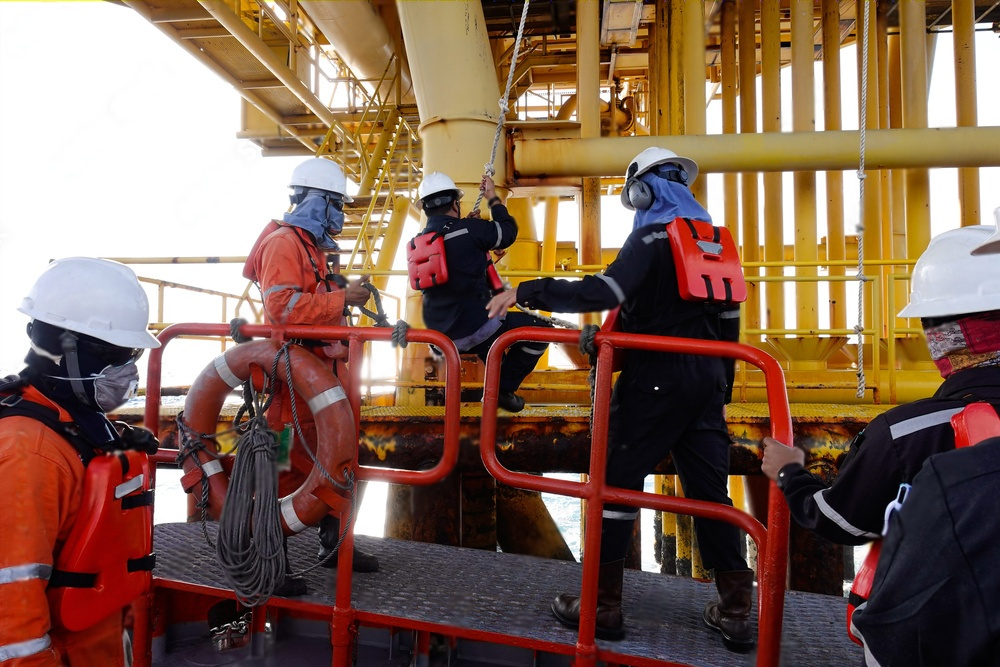Crew Onboarding
Offshore crew onboarding is a specialized process tailored to the unique challenges and conditions associated with offshore operations, especially in industries such as oil and gas.

CREW ONBOARDING
Safety Training: Safety is paramount in offshore operations. New crew members must undergo comprehensive safety training, including familiarization with emergency procedures, proper use of safety equipment, and adherence to offshore safety regulations. This training is critical due to the remote and potentially hazardous nature of offshore environments.
Safety Training: Safety is paramount in offshore operations. New crew members must undergo comprehensive safety training, including familiarization with emergency procedures, proper use of safety equipment, and adherence to offshore safety regulations. This training is critical due to the remote and potentially hazardous nature of offshore environments.
Technical and Job-Specific Training: Offshore crew members often have specialized roles and responsibilities. Onboarding programs should include job-specific training to ensure that new hires are proficient in operating equipment, handling tools, and performing tasks relevant to their roles.
Introduction to Offshore Facilities: New crew members need to become familiar with the layout and facilities of the offshore installation. This includes understanding the location of emergency exits, safety zones, muster points, and key operational areas.
Health and Medical Assessments: Offshore crew onboarding typically involves health and medical assessments to ensure that individuals are physically fit for the demands of offshore work. This may include medical examinations, vaccinations, and fitness assessments.
Security Protocols: Offshore facilities often have strict security protocols. Crew members should be briefed on access control, identification procedures, and security measures in place to safeguard both personnel and assets.
Environmental Awareness: Offshore environments are subject to specific environmental considerations. Crew onboarding should include education on the impact of weather conditions, sea states, and other environmental factors on offshore operations.
Rotation Schedules: Offshore work often involves rotation schedules, where crew members spend a designated period on the offshore platform before rotating back to shore. New hires should be familiarized with the rotation schedule and the logistics associated with traveling to and from the offshore location.
Communication Systems: Effective communication is crucial in offshore operations. Crew onboarding includes training on communication systems, protocols, and emergency communication procedures relevant to offshore environments.
Offshore Survival Training: Offshore crew members may undergo survival training, which includes instruction on how to respond in the event of emergencies such as helicopter ditching or evacuation into lifeboats. This training is essential for offshore personnel working in remote locations.
Logistics and Support Services: Crew management includes coordinating logistics for transporting personnel to and from offshore locations. This involves arranging transportation, accommodation, and catering services. Support services such as medical facilities, recreational facilities, and communication systems are also managed.
Integration into Offshore Culture: Offshore crew onboarding should focus on integrating new hires into the unique culture of offshore work. This includes fostering teamwork, emphasizing the importance of collaboration, and promoting a culture of safety and responsibility.
Emergency Response Drills: Regular emergency response drills and simulations are conducted during offshore crew onboarding to ensure that crew members are well-prepared to handle emergencies effectively.
Due to the complex and challenging nature of offshore work, comprehensive onboarding programs are essential to equip crew members with the knowledge, skills, and mindset required for safe and efficient operations in offshore environments.
